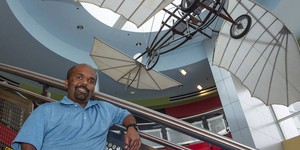Summary
Introduction
Have you ever seen pictures or videos of a roof being blown off a house during a hurricane or tornado? You might be surprised to hear that the roof is actually not pushed off by the strong winds but instead by the air inside the house! This can be explained by Bernoulli's principle, which states that fast-moving fluids or air, such as strong winds, have lower pressure than slow-moving air. In this activity you will demonstrate how balloons can be moved in a similar way. It is not quite as impressive as blowing the roof of a house, but still pretty magical!
Materials
- Two balloons of the same size
- String (about 60 cm length)
- Scissors
- Tape
- A door frame
- Paper towel tube
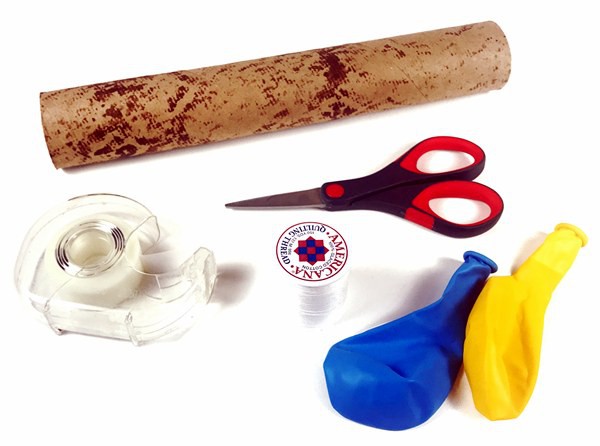 Image Credit: Svenja Lohner, Science Buddies / Science Buddies
Image Credit: Svenja Lohner, Science Buddies / Science Buddies
Prep Work
- Inflate both balloons and tie them off at their ends. Both balloons should approximately have the same size.
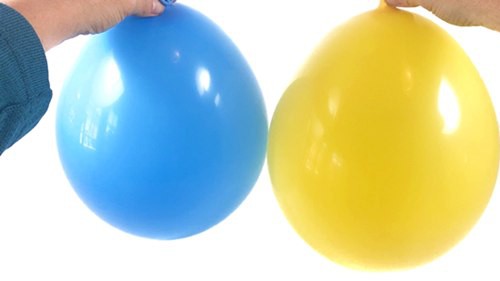 Image Credit: Svenja Lohner, Science Buddies / Science Buddies
Image Credit: Svenja Lohner, Science Buddies / Science Buddies
- Cut two pieces of string, each about 30 cm in length.
- Tie the end of one string to one of the balloons.
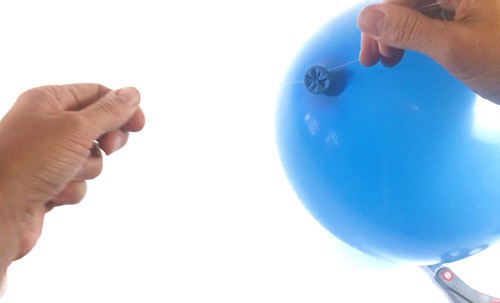 Image Credit: Svenja Lohner, Science Buddies / Science Buddies
Image Credit: Svenja Lohner, Science Buddies / Science Buddies
- Tie the end of the other string to the second balloon.
- Use tape to attach the loose end of each of the strings to the underside of a door frame. Space both balloons so that there is a gap of about 10-15 cm between them.
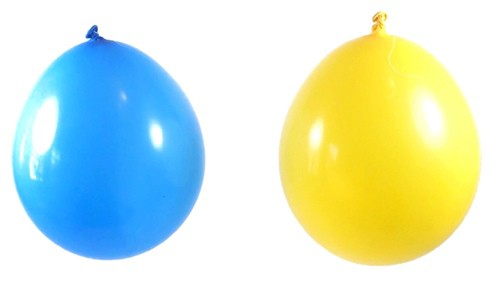 Image Credit: Svenja Lohner, Science Buddies / Science Buddies
Image Credit: Svenja Lohner, Science Buddies / Science Buddies
- Make sure to keep the balloons away from significant air flow.
Instructions
- Step in front of the balloons and hold the paper towel tube so that you can blow air into the space between the two balloons.What do you expect to happen to the balloons if you blow air in between them?
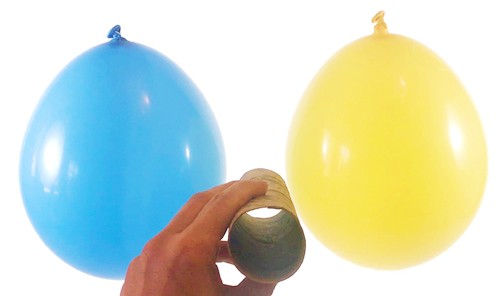 Image Credit: Svenja Lohner, Science Buddies / Science Buddies
Image Credit: Svenja Lohner, Science Buddies / Science Buddies
- Make sure that the balloons are still. Then blow into the paper towel tube very slowly. Try to produce a steady air flow.What do you notice? Are the balloons moving?
- If the balloons moved, stop their movement and then blow in between them again using the paper towel tube. This time try to blow through the tube harder than before but still try to maintain a steady air flow.What happens to the balloons this time? Can you explain your observations?
- Finally, repeat step 3, but this time blow through the tube as hard as you can, producing a steady air flow.Do your results change with increasing air flow? Why or why not?
Cleanup
- You can reuse all of the materials or dispose of them in the regular trash.
What Happened?
Did you notice that both balloons magically moved towards each other without being touched at all? The effect which you observed is a great demonstration of Bernoulli's principle. As long as both balloons just dangle from the door frame, the air around them in each direction is static. This means the air exerts the same amount of pressure onto each side of the balloon and both balloons are still. When you slowly blew air in between the balloons, they probably did not move much. This is because a very slow air flow does not greatly change the pressure conditions around the balloons.
However, when you blew through the paper tube more forcefully, you should have noticed that the balloons magically came together. By blowing air forcefully between the balloons, you created an area of low pressure in between the balloons. This is because fast-moving air produces less pressure. The air pressure between the balloons decreased in comparison to the air pressure around the rest of the balloons. Because higher pressure pushes towards lower pressure, the balloons were pushed towards each other. You could have made the same observations using ping pong balls instead of balloons. With heavier objects, however, the generated air pressure difference might not be enough to make them move. The spacing between the balloons matters as well. If the gap between the balloons is too wide, the low air pressure area produced by blowing between them will no longer have an effect.
Digging Deeper
Daniel Bernoulli was a Swiss scientist who in the 18th century studied how fluids behave when they are in motion. When experimenting with fluids flowing through an hour-glass shaped tube, he made a discovery. He realized that fast-moving fluids produce less pressure and slow-moving fluids produce greater pressure. His discovery became known as the Bernoulli principle. It is not only true for fluids but also for air because gases, just like fluids, are able to flow and take on different shapes. A simple demonstration of Bernoulli's principle requires floating a ping pong ball in a moving stream of air, for example on top of a fan or hairdryer. Why does the ball not fly off the fan? It is because of Bernoulli's principle. The fast-moving air, which carries the ball into the air, is at a lower pressure than the air surrounding the ball. As the ball is trying to fall off the fan, this surrounding higher-pressure air pushes the ball back into the area of lower pressure above the fan. As a result, the ball stays afloat on top of the fan.
Bernoulli's principle can also explain how lift is generated under an airplane wing. Airplane wings are designed to let the air flowing over the top move faster than the air flowing underneath. According to Bernoulli, this creates a pressure difference in which the pressure on the surface of the wing is lower than below. This higher-pressure air pushes up on the wing and thus creates an upward lifting force—the airplane takes off!
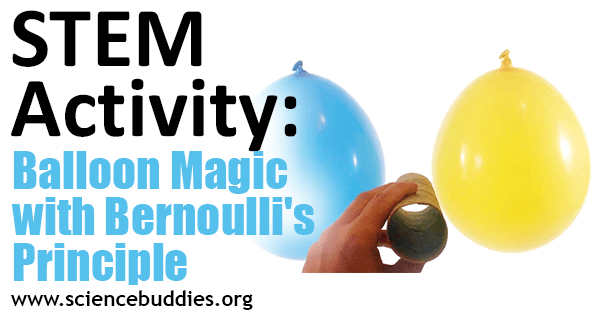 Image Credit: Science Buddies
Image Credit: Science Buddies
Ask an Expert
For Further Exploration
- Repeat the same experiment but vary the size of your paper tube. Do smaller diameter tubes, such as a straw, have the same effect? Do you need the paper tube at all?
- Find out if you can still make the balloons move if they are further apart from each other. Change the distance between both balloons and test if it affects your results. Do you find a maximum or minimum distance beyond which the experiment does not work anymore?
- Instead of balloons, try using ping pong balls or other objects in this experiment. Do you still see the same effect?
Related Resources
Links
- NSTA: Bernoulli's Principle
- MIT Department of Aeronautics and Astronautics: Theory of Flight
- DisasterSafety.org: Roof Blow Off






